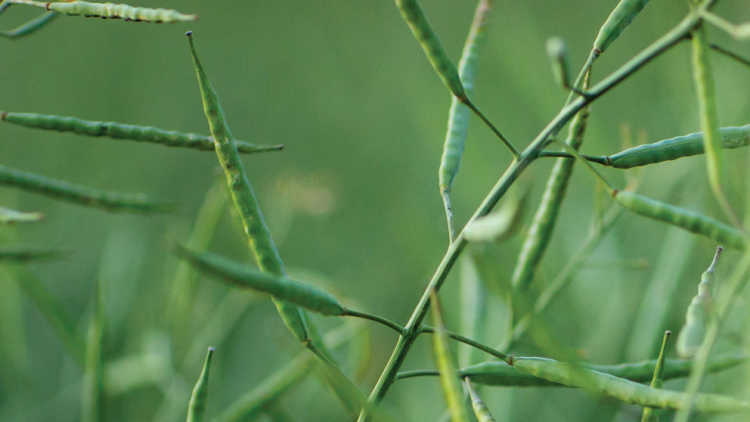2020 grains, oilseeds and pulse outlook update: Weather and global demand to influence profitability

FCC Economics will update its projections about profitability across three Canadian agriculture sectors (red meat, dairy, and grains, oilseeds and pulses) throughout July. We’ll describe what has happened in 2020 to-date and what to monitor over the next six months.
In our January 2020 Grains, Oilseeds and Pulses Outlook, we identified three major trends to affect profitability for the sector:
Trade tensions’ influence on the global economy and agri-food markets
African Swine Fever’s (ASF) disruption of livestock and meat markets
Large global supplies amid challenging growing conditions for crops
How did we do in the first half of the year?
The COVID-19 pandemic triggered a global recession, highlighted by severe supply chain disruptions, including reductions in processing capacity and plant shutdowns. Despite these challenges, trade of Canadian grains, oilseeds and pulses has performed well in the first half of 2020.
According to the Canadian Grain Commission, producer deliveries were 13.5% higher year-to-date (YTD) and exports 8.1% higher. Exports are competing with a strong domestic demand: AAFC projects domestic use of principal field crops in the 2019-20 crop year to be 3% higher than last year.
Global trade tensions continued to weigh on markets. In January, China and ;the U.S. agreed to a Phase 1 trade deal, which called for the export value of U.S. farm products to China to increase by 50% relative to 2017. Yet, it looks as if China won’t meet its ambitious target – even if their recent purchases of corn, wheat and sorghum have been aggressive. Canada - China trade relations remained lukewarm. Conversely, a reduction of Indian tariffs on Canadian exports of lentils provided a boost to lentil demand.
The large global supplies of major grains and oilseeds and shifts in demand for food and ethanol due to COVID-19 have resulted in price trends different than anticipated in January (Table 1).
Table 1. Pulse prices stronger than January forecast, grains and oilseeds mixed

Sources: Statistics Canada, AAFC, USDA, CME, MGEX, ICE Futures contracts, and FCC calculations.
Our revised forecasts for corn, soybeans and barley are down from prices recorded in the first six months of the year. Lentils continue to show upside, but peas are projected slightly lower in the second half of the year. Canola and spring wheat prices are projected above the range observed lately, while durum is projected to trend sideways.
Trends to watch for the rest of 2020
Supply and demand balance in Canada, U.S. and the rest of the world
Grains
Weaker demand is behind the general weakness in prices of cereals and corn relative to our January projections. The 2020 Canadian wheat (except durum) production is projected to increase as higher yields will offset the decline in seeded acres. The overall wheat marketplace remains well supplied globally despite downward revisions to production due to weather concerns. Large portions of Alberta and Saskatchewan have experienced above-average precipitation in 2020. Quality will be an important driver for Canadian revenues.
Canadian corn production is projected up 3% as higher yields are expected to offset lower planted acres. Several parts of Ontario and Quebec are drier than normal. Tighter domestic supply in 2019-20 provided support to local corn prices despite U.S. corn futures flirting with US$3 due to considerable cutbacks in corn ethanol production.
Overall, U.S. corn production is expected to increase over 10% in 2020 with more planted corn - 92 million acres or a 2.5% increase over 2019. Timely rains are going to be essential for the U.S. to produce the expected large corn crop. The USDA projects ethanol production to rebound in the second half of 2020, but this is conditional on fuel consumption continuing to climb - a highly uncertain prospect at this time.
Oilseeds
The 2020 domestic canola production is projected to increase by 1% as a decline in seeded acres will be offset by higher yields. Conversely, Canadian soybean production is projected to decline with seeded acres estimated to fall 11% in 2020. Canola and soybeans have a different price outlook, mostly based on differences in demand projections. The EU demand for Canadian canola is expected to remain strong, even when considering Ukraine and Australia's potential competition.
U.S. soybean seeded acres are expected to increase 11% in 2020 yet ending stocks for the 2020-21 year are projected down. U.S. soybean exports for 2019-20 appear to match the pace projected by the USDA, but an uncertain prospect for 2020-21 Chinese soybean imports will be weighing on prices.
Pulses
Pulse prices have improved due to stronger demand and tighter supplies. Canadian lentil production is expected to increase by 14% primarily due to higher seeded acres. Production of dry beans is also forecast to increase in 2020-21 due to higher yields, while the production of dry peas will remain unchanged.
In the near term, domestic demand for plant-based proteins remains strong given disruptions in meat supply chains and resulting inflation. Global demand is a function of economic growth and well-functioning supply chains that hinge on the post-pandemic recovery.
Strength of the Canadian and global economies
The gradual re-opening of economies leads to recovery, and food consumption patterns will trend accordingly. Household income is key. The job market recovery has been strong lately, but it could lose momentum in the second half of the year.
Interest rates are expected to remain low into 2022 according to forward guidance by the Bank of Canada. The Canadian dollar gained significant ground against the USD since it reached a low of US$0.69 in March. We expect it to stay below US$0.75 on average for the rest of the year. These financial trends should support profit margins of grain, oilseed and pulse operations.
Craig Klemmer
Principal Economist
Craig joined FCC in 2009 as an Agricultural Economist, specializing in monitoring and analyzing the macroeconomic environment, modelling industry health, and providing industry risk analysis. Prior to FCC, he worked in the livestock branch of the Saskatchewan Ministry of Agriculture. Craig holds a Master of Agricultural Economics degree from the University of Saskatchewan.
